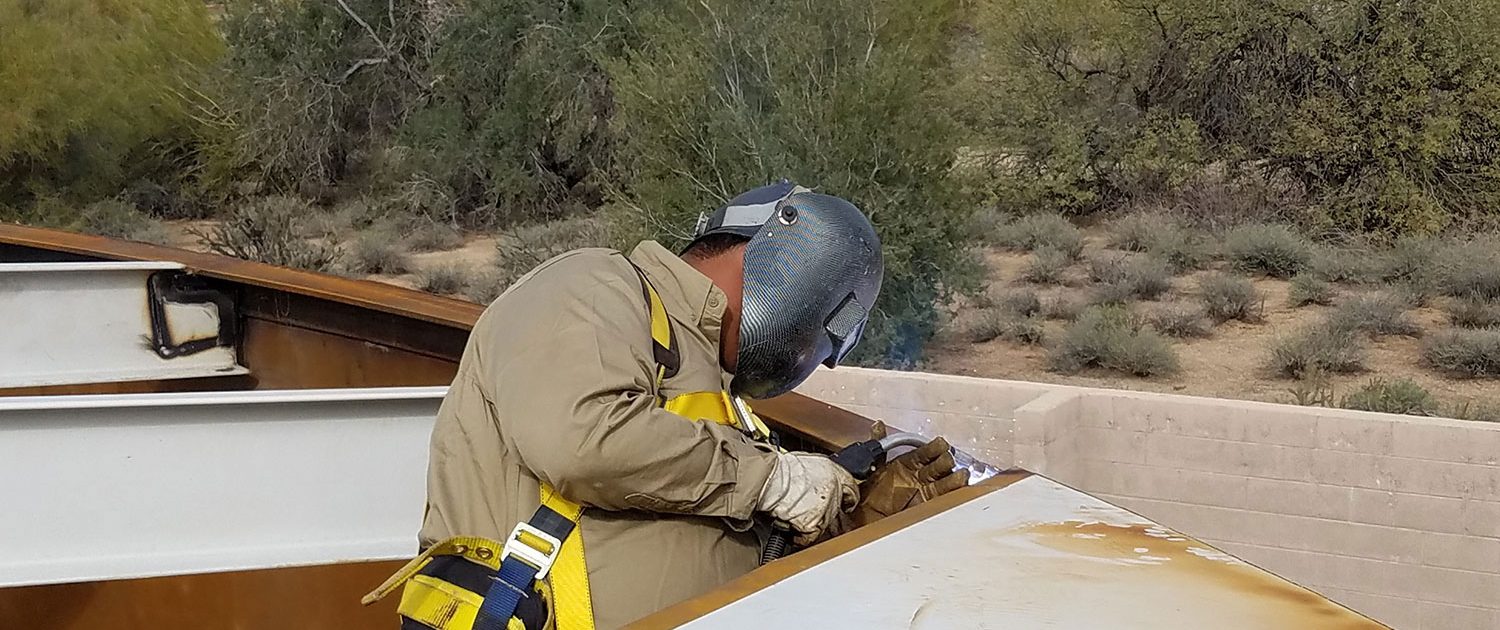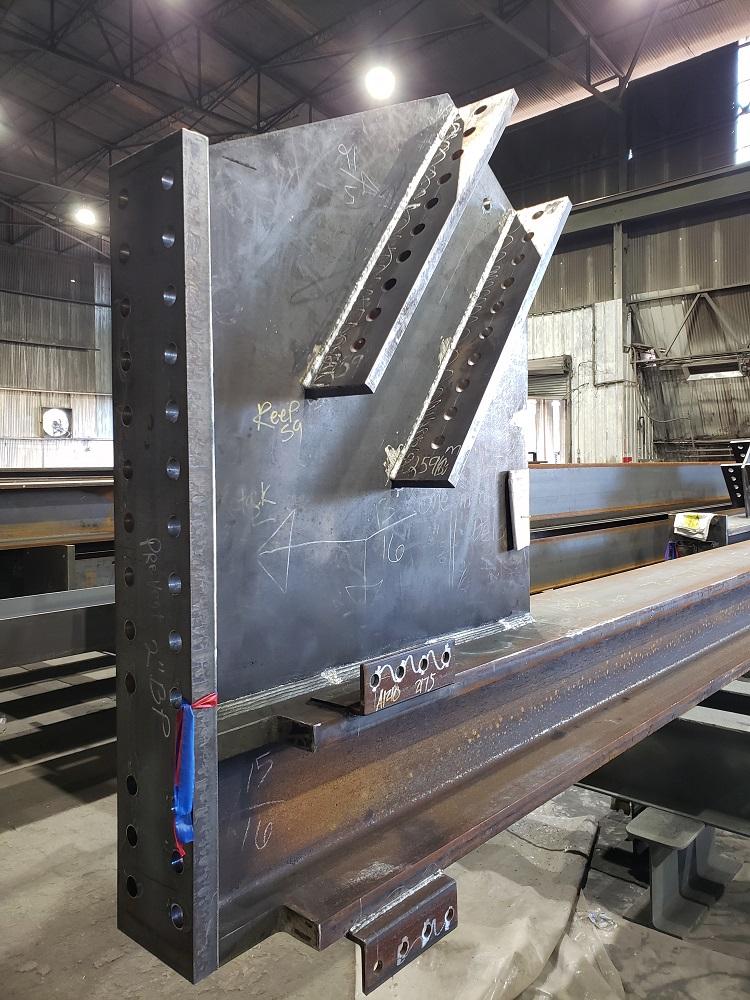Advanced Steel Fabrication Melbourne: Building the Future Today
Advanced Steel Fabrication Melbourne: Building the Future Today
Blog Article
Innovative Fads in Steel Construction: Enhancing Toughness and Accuracy
In the realm of steel fabrication, the search of resilience and precision has led to a wave of cutting-edge fads that are improving the sector. From improvements in welding innovations to the integration of robotic automation in construction procedures, the landscape of steel manufacturing is progressing quickly. High-strength alloy advancement, combined with the application of 3D modeling and simulation software, is pushing the limits of what is attainable in terms of structural integrity and precision. Additionally, the expanding emphasis on sustainable practices in steel manufacturing is not only driving effectiveness however likewise cultivating a more eco mindful strategy to construction. These patterns are not just shaping today yet additionally preparing for the future of steel fabrication, promising additional improvements in resilience and precision.
Advanced Welding Technologies
In the realm of steel construction, the fostering of cutting-edge welding technologies has dramatically reinvented the market's approach to achieving exceptional quality and precision in structural welds. Advanced welding innovations, such as laser beam of light welding and friction mix welding, have actually arised as game-changers in the area. Laser beam welding uses a concentrated laser beam of light to join steel elements with exceptional precision and rate, making it suitable for intricate styles and thin materials. On the various other hand, rubbing stir welding develops exceptionally solid bonds by mechanically intermixing the molecules of the products at the joint, getting rid of the need for thawing the metal. These modern technologies use various benefits, including minimized heat-affected areas, marginal distortion, and boosted mechanical buildings in the bonded joints. By leveraging these advanced welding techniques, steel producers can elevate the sturdiness, toughness, and accuracy of their structural welds, fulfilling the increasingly demanding requirements of contemporary building and construction projects.
Robotic Automation in Manufacture
Welcoming robot automation has come to be a foundation of contemporary steel construction methods, simplifying processes and enhancing effectiveness across the industry. Robotics are reinventing the way steel components are produced, offering unrivaled accuracy and rate while minimizing human mistake. These automated systems can handle recurring jobs with consistent precision, bring about better final result.
One key benefit of robotic automation in steel fabrication is the ability to work all the time without tiredness, considerably increasing production result. This constant operation minimizes downtime and increases task timelines, inevitably saving prices for makers. In addition, robots can be set to do detailed jobs that might be dangerous or tough for human workers, improving safety and security in the work environment.
Additionally, robot automation makes it possible for smooth assimilation with other digital innovations, such as computer-aided layout (CAD) software and Net of Points (IoT) systems (metal fabrication melbourne). This interconnected approach enhances interaction between various stages of construction, enhancing operations and guaranteeing real-time surveillance and control. As the steel fabrication sector remains to develop, robotic automation stands apart as a transformative pressure driving effectiveness and precision in producing processes

High-Strength Alloy Development
The innovation of high-strength alloy advancement in steel manufacture is improving the sector's strategy to improving material toughness and performance. High-strength alloys are engineered to show superior mechanical residential properties, such as increased tensile strength, durability, and rust resistance contrasted to traditional steel qualities. By including these sophisticated alloys into construction processes, producers can produce parts that stand up to greater anxiety levels and severe environments, leading to more dependable and sturdy final product.
One key advantage of high-strength alloy growth is the ability to lower product thickness without jeopardizing structural honesty. This not just results in lighter-weight parts however likewise contributes to cost financial savings and enhanced efficiency in manufacture and setting up procedures. Furthermore, the boosted strength-to-weight ratio of these alloys permits the style and building and construction of frameworks with higher load-bearing capabilities while lessening general weight.
3D Modeling and Simulation Software Program
Improvements in steel fabrication procedures have been substantially pushed by the integration of sophisticated 3D modeling and simulation software program tools. These tools allow producers to develop comprehensive virtual designs of their projects, enabling them to visualize the end product with accuracy before any physical work starts. By simulating various stress factors, ecological conditions, and structural loads, makers can maximize designs for improved longevity and efficiency. In addition, 3D modeling and simulation software enhance the production procedure by recognizing prospective concerns at an early stage, minimizing the requirement for expensive rework and lessening material waste.

Lasting Practices in Steel Production
Integrating lasting practices into steel production procedures is necessary for decreasing ecological impact and making sure lasting resource schedule. One vital lasting technique is the adoption of energy-efficient technologies to decrease greenhouse gas discharges throughout the steel manufacturing process. This includes using sustainable power resources, such as solar or wind power, to power steel plants and applying energy-efficient tools to enhance power usage.
An additional important aspect of sustainable steel production is the responsible sourcing of raw materials. This includes ensuring that the iron ore and other resources used in steelmaking are gotten from moral and eco-friendly sources. By advertising transparency in the supply chain and adhering to stringent ecological standards, steel manufacturers can reduce the adverse impacts of resource extraction on neighborhood communities and neighborhoods.

Final Thought
To conclude, the cutting-edge trends in steel fabrication such as advanced welding technologies, robotic automation, high-strength alloy development, 3D modeling and simulation software, and sustainable practices are boosting the toughness and accuracy of steel items. These innovations are revolutionizing the steel construction market by boosting sustainability, effectiveness, and quality. It is clear that the future of steel construction lies in welcoming these sophisticated modern technologies to meet the demands of modern-day building and manufacturing industries.
In the world of steel construction, the search of durability and accuracy has actually led to a wave of cutting-edge patterns that are reshaping the sector.In the world of steel fabrication, the fostering of cutting-edge welding innovations has considerably revolutionized the market's method to accomplishing exceptional quality and precision in structural welds. As the steel construction market proceeds to progress, robotic automation stands out as a transformative pressure driving efficiency and precision in making procedures.
Furthermore, recycling and reusing steel scrap and waste products play a considerable role in enhancing the sustainability of steel manufacturing. Alpha reo.In conclusion, the ingenious fads in steel construction such as innovative welding innovations, robotic automation, high-strength alloy growth, 3D modeling and simulation software program, and sustainable methods are boosting the toughness and precision of steel items
Report this page